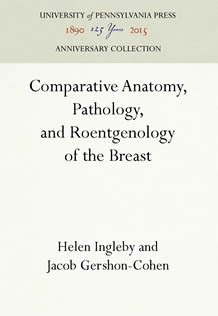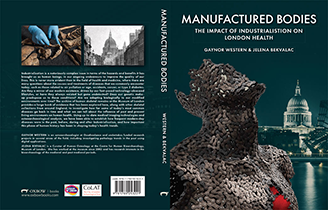The history of the detection of cancer
Although there had been a long history of identifying 'tumours' through visual inspection and palpation, these methods were very restricted.
Detecting cancers that weren't immediately visible was problematic. The removal of cancers using surgery on living patients (excision), which allowed surgeons to examine the tumour in more detail, was a risky business due to the lack of general anaesthesia until 1846, and even then poor cleanliness still led to high rates of surgical infections.
Nonetheless, some early cases of cancer diagnosis and surgical intervention are recorded. An initially successful resection of a breast cancer tumour was carried out in the mid 17th century by surgeons in Shropshire near Stratford-upon-Avon, one of our sample sites. After her death in 1666, John Ward, the rector of the Holy Trinity Church there, and Mr Eedes, undertook a post-mortem examination of the breast and immediate anatomical structures. They found that the tumour had re-grown but had not spread to the adjacent ribs, though they did not undertake a full autopsy due to the lack of ‘spunges and other things convenient’.
Diary of the Rev. John Ward, A.M., Vicar of Stratford-Upon-Avon. Extending from 1648-1679 (*Turn to pages 244-247 for detailed description of surgical excision*)
Methods of detecting cancer really didn’t change until a whole new method of imaging the body was discovered in 1895: X-rays. The application of x-rays, or radiography as it is known clinically, had a slow start. The technique was not considered applicable to the soft tissues, only to bones, and practitioners continued relying on visual inspection and palpation. However, in 1913, Albert Solomon, a professor of surgery in Berlin, first used x-rays to examine a breast cancer specimen and its structure. In 1927, this method was expanded to include live patients by Otto Kleinschmidt and his paper is one of the earliest to report the use of radiography in the detection of breast cancer.

Book cover of Comparative Anatomy, Pathology, and Roentgenology of the Breast. Helen Ingleby and Jacob Gershon-Cohen. University of Pennsylvania Press
By 1937, Helen Ingleby, an American pathologist, working for Gershon-Cohen in the USA, was the first to correlate the anatomy and pathology of the breast using radiography. Their team worked for several decades in the area and eventually in 1954, they had refined their techniques to the extent that successful radiological detection rates had increased to around 90%. By comparison, they showed that clinical examination and palpation alone was only 48% accurate. It was a key milestone in the fight against breast cancer.
During the 1950’s and 60’s, radiographic techniques continued to improve and ‘mammography’ came into being courtesy of Robert Egan working at the Tumour Institute at the University of Texas. By the 1970’s, mammography was proving to be invaluable and rates of mortality from breast cancer were significantly improved. Mass screening was now advocated as a public health measure, starting in the UK in the late 1980’s, though some question marks still hang over its pros and cons.








